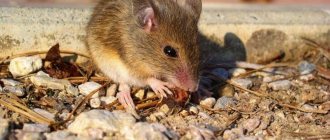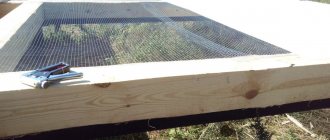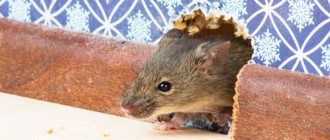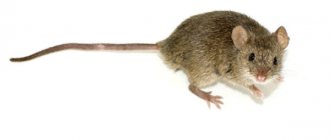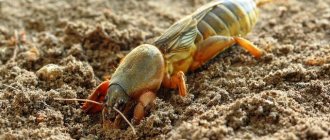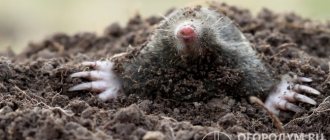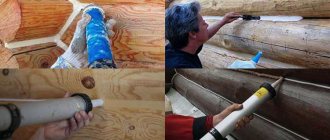Mice in a private home are a real disaster for owners. Small, ubiquitous rodents rustle and squeak at night, spoil food and furniture, gnaw electrical wiring - and this is just a short list of the troubles that accompany the appearance of gray pests. As carriers of many diseases, mice pose a serious danger to human health. Getting rid of mice and rats forever in a private home is not an easy task. There are many means of combating these malicious pests. These include ready-to-use pesticides and various traps and repellents. The main thing is to choose the most effective one and not give up until there is not a single mouse left in the house.
Where do mice come from in the house?
In the warm season, the house mouse feels great in nature, content with cereal grains, seeds and vegetables. With the onset of cold weather, she hurries to take refuge in a person’s home, where she forgets about tasty and healthy food and gnaws everything that gets in her way: plastic, wood and even iron. The mouse must always chew in order to grind down its continuously growing incisors.
Movable and soft skull bones, a tiny body and sharp teeth allow the pest to crawl through the smallest holes. A hole with a diameter of 6 mm is enough for a mouse with its entire family and many friends to settle in the house. Therefore, the first thing you need to do to protect your home from mice is to seal all the cracks and holes through which the enemy can enter.
One of the reasons for the appearance of mice is failure to comply with basic sanitation standards. Rodents are more likely to choose a house with an always dirty floor, crumbs on the table, and food scattered on the shelves, rather than a clean home.
It is impossible not to notice that mice have settled in the house. In all the places where these animals have been - in the attic, near the trash can, in food boxes - traces of their vital activity remain. In addition, an unpleasant specific smell appears in the house, and at night there is rustling and noise that cannot be confused with other sounds.
To remove mice from a private home, you need to remove all products out of reach of rodents, seal cracks and holes, and destroy or expel the remaining individuals using one of the following methods.
- Using folk remedies.
- Repel with organic repellents.
- Set mousetraps.
- Treat the room with pesticides.
- Use an ultrasonic device.
If after these measures the problem remains unresolved, professional baiting of domestic rodents is necessary.
What to do first
There are several effective ways to control mice. Depending on the number of rodents and the financial capabilities of the owner of the house, because some of the methods are quite expensive.
Before you start fighting mice, you need to clean up the house and the attic once they have settled there. While tidying up, you can destroy rodent food supplies by finding, for example, forgotten cereal or something else edible tucked in the corners.
Cleaning will help you find places, if not nests, then at least shelters. Mice, like cockroaches, prefer to live in dirty houses, where there is always food and shelter for them. You should not leave food on the table, but put it in the refrigerator. Well, what mice can gnaw - in strong boxes or chests.
Folk remedies for mice
Mice have been annoying people since ancient times, so many folk methods and techniques have accumulated that allow you to get rid of uninvited guests forever.
Peppermint
Rodents cannot tolerate strong odors; in particular, they do not like the aroma of peppermint. In order to repel pests from your home, you can place dried leaves and branches of this plant on grocery shelves or use mint oil, which is sold in pharmacies. To do this you need to do the following:
- roll a cotton ball and soak it in oil;
- place several of these balls in those places where mice most often appear: near the trash can, on racks and shelves, near ventilation hatches;
- The mint balls need to be renewed every three days.
We recommend: How to get rid of rats on your own?
Wood ash
One of the effective means to get rid of mice in a private home is wood ash. The fact is that ash contains alkali, which corrodes delicate mouse paws. Trying to get rid of the caustic substance, rodents lick it off, which causes stomach irritation. To cause such inconvenience to mice, it is enough to finely crush the ash and scatter it on the floor in the basement or attic at the rate of a bucket per 5 m2 of area.
Construction gypsum
The method of killing mice using construction plaster is less humane than the previous two. The essence of this folk remedy is as follows: prepare a mixture of plaster, sugar and flour, and place a bowl with the treat in a prominent place. A small container of water is placed next to the bait. The mouse, having eaten the sweet mixture, will definitely want to get drunk. Once water enters the animal’s body, it will come into contact with the plaster, which will subsequently harden and paralyze the vital organs of the rodent.
Getting rid of rodents in the attic
There are many effective options for getting rid of pests in your attic. We offer the following methods:
- mousetraps;
- cats;
- pesticide;
- ultrasonic and electronic repellers.
First of all, try using mousetraps - they are very reliable and give 100% results. Moreover, today there are a huge number of them, of different types.
There are traditional traps for animals, and there are also those that are constructed using glue. You can also make a humane mousetrap with your own hands that will not kill the mouse.
Currently, many mousetraps have been invented, but not everyone knows how to choose the most optimal and effective one. Some traps simply drive away or immobilize the animal without killing it.
Organic repellents
Many manufacturers of organic products used in agriculture offer a wide range of rodent repellents. These products are less harmful to nature and humans compared to pesticides. Repellents contain natural substances, such as peppermint, that force pests to find a new home. Such organic preparations are available in aerosol form and are sold in stores selling home and garden products.
Ways to deal with mice
Cat or cat
Getting a cat to exterminate such pests is the simplest way to combat them, which people have been using for a long time.
This method has several significant advantages:
- The animal will do all the work of killing mice quite quickly and silently.
- No personal participation is required.
- This method is completely safe.
- There will be no dead individuals left in burrows and other shelters, which eliminates their decomposition and the subsequent spread of unpleasant odors, as happens when using some other extermination options.
However, it must be taken into account that if a cat is brought into the home not only as a pet, but as a mouse hunter, then it is best to take an animal that is already quite mature and has the skills to exterminate them.
Mousetraps
Today, many different models and versions of these devices have appeared; they differ in design features, but operate on the same principle: a small amount of food is placed in the mousetrap, attracting the attention of the rodent, and a mechanism that is triggered after the mouse touches the bait.
There are two types of these devices:
- Catching mice and limiting their further movement.
- Immediately killing the pest by triggering a lethal mechanism.
The number of mousetraps installed in the room depends on the degree of activity and the number of pests that have settled. Proper use and placement of devices can significantly reduce the size of their populations.
Traps
A variety of models of traps can be freely purchased in stores, but some people make them themselves; below are several options for traps that you can make with your own hands:
- The simplest type of trap can be made from an old saucepan or large tin can:
- To do this, it is necessary to fasten a rod across the selected container ; it should be equal in length to the diameter of the vessel and located closer to its bottom; a wooden stick or thick wire is best suited for production.
- One of the edges of the container must be slightly raised and a thick button or other similar object placed under it , to which a thick thread with a wire hook is attached.
- You need to place a small piece of food on the hook that can attract a rodent ; it should hang at a distance of 2-4 cm from the floor surface, and the thread will need to be first pulled through the rod inside the container.
- As soon as the rodent tries to grab the bait and pulls the thread , the support will be knocked out from under the edge of the vessel, after which the mouse will find itself in a trap from which it will not be able to escape.
- It will be quite easy to remove it from there; just slide plywood under the trap and take it away from the house. This variety is of the humane type, since it does not involve physical destruction of the pest. The most important thing in this process is the choice of container; it must be heavy enough so that the prisoner does not have the opportunity to knock it over and escape.
- Plastic bottle trap:
- To make another simple type of mouse trap, you can use a regular plastic bottle , in which a hole with a diameter of no more than 2-3 cm is cut near the neck.
- Then a thick thread or cord must be tied to the upper part, which at the other end is attached to any heavy object. A small edible bait is placed at the bottom, which can attract a rodent with its smell.
- After this, the bottle is placed on the table so that the part with the entrance lies on its surface, and the area with the bait is behind its edge.
- Now the mouse, having climbed inside and rushed towards the bait , will outweigh the bottle and knock it off the table, the container tied to the load will remain hanging in a position in which the pest will not be able to get out.
- Another simple trap is to simply place a piece of sturdy cardboard or a small piece of wood on a table with one side extending beyond the edges. The bait is placed on the protruding part, and a bucket is placed below. As soon as the mouse begins to move towards the bait along the board, it hangs under its weight and the rodent falls into the bucket.
There are also various types of glue and spring traps, but in most cases they are aimed not at catching, but at destroying rodents, and their manufacture requires certain skills, so it is easiest to purchase such models already assembled and ready-made.
Folk remedies
Below are the most well-known options for fighting rodents with folk remedies:
- All mice cannot tolerate wood ash, since it contains an alkali that corrodes their paws, and when trying to wash themselves, also the mouth, but it does not pose any threat to humans. This method is most often used to remove pests from underground or cellars; for this, a bucket of ash is poured onto an area approximately equal to 5-10 square meters. However, this option also has a significant drawback: rodents will most likely carry the ash throughout the house, after which cleaning will be required.
- To use another method, you need to mix alabaster and wheat flour in equal proportions, you will get something similar to the rodent’s usual food, which by smell will not arouse any suspicion in him. A container of drink is placed nearby, to which the pest will most likely turn its attention after eating. The essence of the method is that when such food is mixed with water, a mixture is formed that is similar in structure and characteristics to cement, which in just a few minutes hardens in the rodent’s stomach.
- Mix finely chopped wine corks and bread in equal proportions, you can add a small amount of unrefined sunflower oil to minimize mouse concerns. The cork particles will gradually begin to swell inside the rodent, which will cause intestinal blockage and death.
- Kerosene and formaldehyde have the most unpleasant odor for mice; they will try to immediately leave the place in which it appears. But this method can only be used in premises not intended for residential use. An alternative is to use a small amount of old rubber which is burned inside a metal bucket, this smell will also deter said guests.
Ultrasonic repellers
Ultrasonic repellers are among the modern developments and the most innovative methods of pest control.
Today there are many types of such devices, so when making a choice you need to know and take into account the following features:
- Most modern models emit only ultrasound to repel pests , but some varieties also emit electromagnetic waves.
- Walls, floors and ceilings are an insurmountable obstacle to ultrasound, but not to electromagnetic radiation, however, they will not be able to penetrate metal surfaces.
- Ultrasonic radiation is most effectively reflected from surfaces with a solid structure. For example, the presence of carpet will negatively affect this characteristic.
- The effectiveness of the device is also influenced by the specifics of the room : if it is used to store edible supplies, then rodents can stay in it for several more months; It usually takes 1-2 weeks to evict them from residential premises.
- Ultrasound can also be felt by pets , so before purchasing it is necessary to clarify the parameters of a particular device so as not to cause discomfort and unpleasant sensations to your pets.
I
Today there is a large number of different poisons; the following varieties are usually used to exterminate pests:
- Industrial toxic substances.
- Poisons created and intended specifically for poisoning mice.
- Substances with toxic properties, created independently, folk remedies.
However, before making a purchase, you need to think carefully about the choice in order to purchase a variety that will not harm pets or people themselves.
For this reason, it is recommended to avoid toxic substances that contain the following components:
- Lead.
- Arsenic
- Thallium.
- Strychnine.
Most modern varieties of poisons for rodents are produced in special plastic and polyethylene packaging , which allows you to place it in the most suitable places without touching the poisonous substance yourself.
Sometimes it happens that mice refuse to consume the poison and avoid it; in this case, it is recommended to mix it with their usual food.
Poisoned baits
Another rodent control method is to use pre-sent bait. You can prepare it yourself, but it is important to remember that this process must be carried out only on the street or, at least, outside residential premises.
In order to receive a highly effective sent bait, you must use the following algorithm of actions:
- One of the varieties of rodenticides is most often used as a poisonous substance , but all of them are virtually insoluble in water, so careful mixing of the poison with food will be required.
- If it is necessary to poison grain bait, it is recommended to first add starch paste to it.
- You can additionally add a small amount of vegetable oil , which will make the food more attractive and reduce the rodent's suspicion. However, such an additive is unacceptable if zoocoumarin is used.
- You can cook grain porridge with rodenticides; this must be done first by wearing a respiratory mask and rubber gloves. The used utensils will then need to be disposed of, since their use in the future will be unsafe.
- You can mix bread with rodenticides , this will be another option for effective poison bait.
- The amount of poison added to the bait usually ranges from 5 to 100 grams. per kilogram of food. The volumes depend on the specific type of sending substance chosen; it is better not to exceed the permissible limits, since an excess of poison can be noticed by the mouse, which will scare it away from the bait.
Glue
Today, traps based on glue have also become widespread. They have two distinctive features:
- Highly effective, since the adhesive base does not have any aromas , and when using traps with metal elements, the mouse can smell them.
- The main disadvantage is that a victim stuck in glue does not die immediately. For this reason, it will be necessary to get rid of the rodent that is still alive or wait for several days until it dies.
Mousetraps
Many devices and devices called mousetraps have been invented to catch mice.
This is interesting!
The first mousetrap was invented by Hiram Maxim, who a little later developed the design of a machine gun with the same name.
The simplest mousetrap is a rather primitive device equipped with a spring lever. Cheese, chocolate or sunflower seeds, which rodents love, are placed in the trap as bait. After the mouse reaches for food, the trigger mechanism is activated and kills the pest.
There are mousetraps, which are an iron cage with a slamming door. The mouse remains alive and can be released away from the house.
Electric mousetraps kill animals quickly and painlessly. Having fallen into such a trap, the animal touches the plate through which a high voltage current passes and instantly dies.
Although mousetraps, sticky sheets, and other similar devices for catching rodents are often used in the home, they do have their disadvantages. It is necessary to constantly monitor whether prey is caught in the trap, and release the trap in a timely manner, otherwise the fetid odor cannot be avoided. In addition, another pet and even a small child can get caught in a mousetrap, so such devices should be installed in places that are difficult for humans to reach.
Where to start removing rodents
In the process of breeding or destroying mice, you can encounter a number of difficulties, since they will not be in any hurry to give up their acquired places to a person. For this reason, before embarking on full-scale actions, it is necessary to first change the living conditions of unwanted neighbors, making them less favorable.
First of all, this process includes the following set of measures:
- Review all conditions related to the storage of edible supplies. Food should be stored in the refrigerator or any place inaccessible to rodents; cereals, nuts and seeds should be stored exclusively in glass jars; At night, nothing edible should be left on the table.
- Carrying out extensive cleaning throughout the house will subsequently need to be repeated regularly , with special attention, while paying attention to the kitchen area.
- Eliminate all holes and large cracks in the surface of the walls and floor , since these are the areas that mice most often use for housing and storing stolen food supplies.
- Use means that will create unpleasant conditions for them , for example, scatter ash or maintain a constant aroma of elderberry in places where they often gather or live.
How to poison rodents?
If you have neither patience nor strength left to fight mice using folk remedies and organic repellents, you will have to use “heavy artillery” in the form of pesticides. Poisoned rodent baits (rodenticides) are scattered in places where pests frequently appear. Within three weeks the mice should disappear.
Important!
Do not place containers with poisoned bait in places where small children and pets may be!
Rodenticides are deadly not only for rodents, but also for other warm-blooded animals, including humans, so the following precautions must be observed when working with these toxic substances:
- do not store toxic chemicals in places accessible to children;
- do not place rodenticides near food and detergents to avoid confusion;
- when choosing a rodenticide, it is better to avoid products that contain arsenic or strychnine, as these substances are fatal to humans;
- If poisoning occurs, you should immediately consult a doctor.
We recommend: How to get rid of rats on your own?
Modern pesticides, such as “Storm” or “Mortorate”, contain substances that prevent blood clotting. A dead mouse does not give off a foul spirit, since its body is mummified.
The drug "Goliath" works in a completely different way. The poisoned animal experiences attacks of suffocation, runs out into the street and dies there.
There are bacterial preparations whose action is aimed at ridding a person’s home of rodents. Bactorodencides are cereal grains artificially infected with murine typhus. These products can destroy an entire colony of pests and at the same time are absolutely safe for humans.
Causes of rodents
Various types of rodents, just like insects, can settle next to a person and cause him a whole lot of inconvenience.
Before you begin to destroy such unwanted neighbors, you must first find out the possible reasons for their appearance in order to avoid relapses in the future.
Most often, their appearance is accompanied by the following factors:
- The presence of food and various edible supplies that are stored in places that are accessible to mice. It is worth noting that storing food in bags and even hanging cabinets is not considered a sufficient degree of protection, since such obstacles are not insurmountable for rodents.
- Violation of sanitary standards in the premises, which can be expressed in rare garbage removal, leading to its accumulation in large volumes, as well as extremely rare cleaning. All these factors create a favorable environment for rodents to live in, since among the waste there is almost always food suitable for them.
- Favorable temperature conditions, this factor becomes most relevant with the onset of winter cold, when mice are ready to sacrifice their own safety for the sake of moving to warmer places, including human homes.
- Mass migration of rodents, which can begin due to the fact that someone nearby began to purposefully poison and exterminate them.
Signs of rats
You may not always be able to see rats as they are most active at night. However, you may notice signs of them in your home or on your property. Once you discover this, you need to take proper action as quickly as possible. One of the most obvious signs of an infestation is droppings. It is smaller in attic rats than in Norway rats. Other signs:
- you will hear characteristic sounds in the attic walls;
- stains and marks on drainpipes and walls;
- eaten fruits, vegetables and other food in the yard;
- damaged electrical wires;
- traces and marks along the walls inside the house;
- nests, scattered debris found on your property.
Once rats have taken up residence inside a home, their numbers can skyrocket. One female can give birth to five to eight cubs at a time. In regions with hot and temperate climates, rats breed year-round, and females can give birth up to three times a year.
Signs of mice appearing in the country
Mice chew communications.
Sure signs that unwanted guests have settled in the dacha are:
- the appearance of burrows near the walls of buildings;
- the presence of traces or paths along the walls;
- damaged electrical wiring, furniture, textiles or piping;
- boxes and bags of cereals or other products that contain traces of rodent activity;
- the presence of mouse feces and a specific odor in the room;
- damaged fruits, vegetables, flower bulbs and shoots of young plants.
Method 1. Mouse or rat trap
Mouse in a mousetrap.
We are talking about a mousetrap - a device that everyone has probably heard of (and some have seen in person). This is a kind of trap for rodents. For rats, by the way, they use rat traps - a reinforced version of a mousetrap with a stronger spring and sharp teeth on the base.
There are different types of traps: mechanical, in the form of “jaws”, etc. There are many options, but the method of action is almost the same.
The technology is simple: you put bait, for example, a piece of lard or cheese, into the trap and “load” the mousetrap, that is, cock the trigger. A mouse or rat comes to the smell and tries to steal the bait. At this moment the mechanism is triggered and the trap slams shut. If the mousetrap is mechanical, then a metal bracket is forcefully lowered onto the mouse’s neck. If the mousetrap is shaped like “jaws,” they slam shut and break the rodent’s neck. If the device is electric, a rodent caught in it will receive an electric shock.
This is an effective way to get rid of mice and rats. It is effective, but not the most humane. Although if we are talking about fighting rats and mice, then here, as in war, any methods are good.
Pros : inexpensive, effective, time-tested.
Cons : this method is good if there are a couple of mice or rats running around the house. If a whole flock of them is not suitable, a more global solution is needed.
Not suitable for squeamish and impressionable people - you are unlikely to be inspired by the prospect of pulling a dead rodent out of a trap.
Be careful if there are children, cats or dogs at home. If they are attracted by the bait, they may get caught in the trap themselves.
Cat and mousetrap.
Prevention measures
It is quite difficult to fight rodents and it is much easier to prevent their appearance on the site. To prevent mice from finding the area attractive, you must adhere to the following recommendations:
- harvest on time;
- avoid the presence of mown grass or mulch on the site;
- regularly dig up the soil;
- treat the beds with a solution based on chicken droppings;
- eliminate the presence of through holes and cracks in the walls and roof of the house;
- store food products in tightly closed containers;
- plant mint and lemon balm around the perimeter of the site;
- use repellers.
What types of mice can be found in the countryside?
In summer cottages, there are most often two main types:
- House or house mouse. It causes problems for people in living quarters, gardens and vegetable gardens. Representatives of this species are very prolific and voracious.
- Field mouse or vole. Outwardly, it is practically no different from the house mouse, but they live in more numerous colonies. They cause the greatest harm to vegetation in vegetable gardens and orchards.
Frame house protection
The most effective methods of protection against rodents will be those that were used during construction.
So, the first methods of prevention are:
These methods are considered quite effective and prevent pests from getting into the frame house.
Let's take a closer look at how to use metal mesh.
Application of metal mesh
When laying the foundation, it can be protected with steel sheets up to 1 mm thick. Thanks to them, rodents will not be able to get into the frame house, because the sheets are slippery, and mice will not be able to catch on and climb onto the foundation, sliding down.
Also at this stage it is advisable to use a metal mesh, which has a number of advantages:
An important nuance is the correct selection of material. It will be good if the mesh thickness is about 2 mm, and the cell size is no more than 5x5 mm. If they are wider, then mice will either crawl into such a hole or gnaw through the mesh.
The metal mesh is laid out on the subfloor, after which insulation is placed on it. Wall mounting is carried out to a height of at least 1 m. For the corners of a frame house, you need to use galvanized mesh. If the mesh was not laid at the stage of forming the foundation, then it can be dug around the built house near the foundation. The depth should be about 1 m. A fence of this type can be decorated, for example, with climbing flowers.
Other methods of protection
Most often, mice enter frame houses through the floor, so it is very important to protect it as effectively as possible. In addition to metal mesh, the use of expanded clay is considered a reliable method. Apply it to the subfloor in several layers. First, expanded clay is sprinkled on the ground, a layer of at least 30 cm. Then a polyethylene film is stretched and OSB boards are placed. After this, the structure is again covered with expanded clay. For this method to be as effective as possible, it is necessary to treat the slabs with boric acid and use borax powder.
Insulation also plays an important role in protecting a frame house from mice. Most often they save on it, without attaching much importance, they choose the cheapest thermal insulation material - polystyrene foam. And this is a big mistake. Gnawing through it is not difficult. Therefore, it is recommended to use an expensive but reliable material – ecowool. In addition, it has excellent soundproofing characteristics, provides good insulation, and prevents the formation of mold or mildew.
What harm do rodents cause?
Mice, rats and other rodents can easily enter a frame house without certain protective measures. By doing this, they not only frighten the owners, who are afraid or disdain such guests, but also cause harm. Destruction can occur in any corner of the home. They chew through concrete or wooden floors, wiring, and a wide variety of objects in the house. Often pests destroy winter supplies or other food.
If mice settle in basements, where it is usually damp and dark, they will begin to actively reproduce. In this case, dealing with their huge number is even more difficult. The most dangerous thing is that rodents are carriers of dangerous infectious diseases, for example, cholera, various intestinal diseases, and leptospirosis. Therefore, it is necessary to get rid of them as soon as possible, and for this we will familiarize ourselves with the methods of dealing with mice.
Method 2. Glue board
Glue board.
This budget-friendly method will also help get rid of rats and mice. You smear glue on a piece of wood - essentially, it turns out to be the same mousetrap, only not a mechanical one. You can buy a ready-made glue board. Place bait on it. The rodent comes to the smell and sticks to the board. All you have to do is throw away the board and the rat or mouse.
Pros : very budget method. In addition, you won’t get your hands dirty - you can simply throw away the board with the rodent without even touching the mouse or rat.
Cons : this method is quite cruel. Are you ready to listen to the heart-rending squeak of a rodent that has stuck its paws and fur to the board?
Method 5. Homemade gypsum-based poison
A rat that ate poison.
Folk remedies for mice and rats include homemade poisons.
The main components are gypsum (alabaster) and flour. You can make balls out of them or just pour them into a bowl. Be sure to have water nearby. The rodents will think they have found a tasty meal and will eat the bait. Then they will drink water. Plaster of Paris that gets into the stomach of a rat or mouse will harden and cause intestinal obstruction. Because of this, the rodent will die. After this, you will have to inspect the house for dead rats and mice.
Life hack : you can make a poison, after which the dead rodent will not decompose, but will dry out, that is, mummify. Broad-spectrum antibiotics must be added to it. Their operating principle is as follows: a rat or mouse will die from the poison, and antibiotics will destroy bacteria that appear during the decomposition process. There will be no bacteria - there will be no smell. True, such antibiotics are quite expensive.
Pros : suitable for mass extermination of rats and mice. Not poisonous.
Cons : if you add antibiotics, the poison will be expensive.
